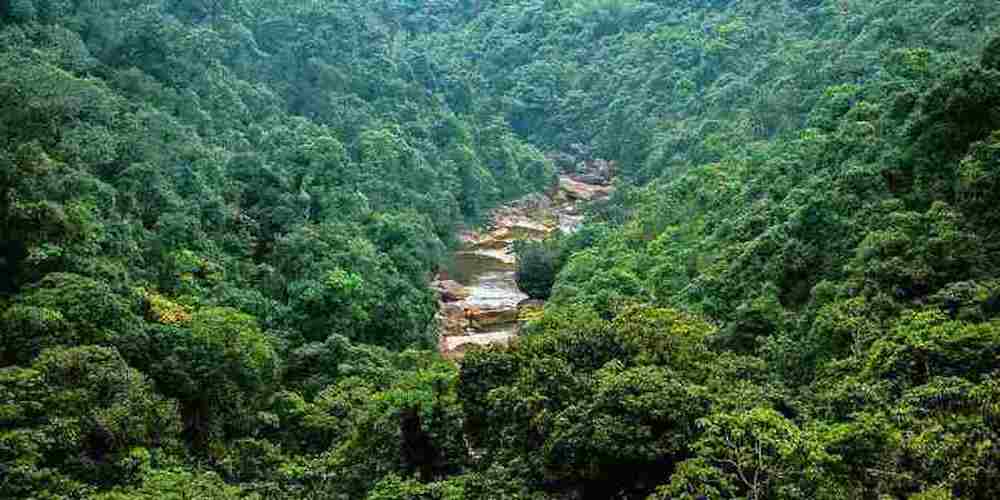Towards a Greener and Cleaner India

The other day Minister of State for Environment, Forest and Climate Change, Shri Ashwini Kumar Choubey told the Parliament (Rajya Sabha ) how the Ministry of Environment, Forest & Climate Change was administering the Control of Pollution Scheme Central Sector Scheme to curb environmental pollution in the country.
The main objective of the Control of Pollution scheme is to monitor air quality across the country and take appropriate air pollution mitigation measures, besides monitoring water quality and noise levels in the country The Control of Pollution scheme is operational since 2018, the component under the scheme are as mentioned below:
(A) Assistance for Abatement of Pollution to weaker State Pollution Control Boards/ Pollution Control Committees (SPCBs/PCCs)and to Central Pollution Control Board (CPCB).
(B) National Clean Air Programme (NCAP).
(C) Environmental Monitoring Network Programme:
(i) Operation and Maintenance of National Air Quality Monitoring Programme (NAMP) stations.
(ii) Operation and Maintenance of Continuous Ambient Air Quality Monitoring Stations (CAAQMS).
(iii) National Ambient Noise Monitoring Network (NANMN) – strengthening and establishment of New Stations in Million Plus Cities.
(iv) National Water Monitoring Programme (NWMP).
(D) Research and Outreach Programmes.
The minister stated that to increase forest and tree cover in the country, various schemes are implemented by the Central and State Government/Union Territory Administration. These include the National Afforestation Programme (NAP) for regeneration of degraded forest and adjoining areas in the country and Green India Mission (GIM). Afforestation activities are also taken up under various programmes/funding sources such as Compensatory Afforestation Funds in lieu of deforestation due to development activities, afforestation activities under Mahatma Gandhi National Rural Employment Guarantee Scheme (MGNREGA), National Agroforestry Policy and Sub-mission on Agro-forestry (SMAF), National Bamboo Mission and National Mission for Sustainable Agriculture.
Choubey also said that Government has taken several steps for mitigation of pollution which include ban on single use plastic, introduction of BS-VI norms for fuel and vehicles since April, 2020, promotion of E-vehicles, cleaner fuel such as PNG, zig-zag technology for brick kilns, Extended Producer Responsibility (EPR) for plastic and e-waste management, real time monitoring of major industrial sectors, etc. The Ministry has also notified various rules such as Hazardous and other waste Management (HWM) rules, E-waste rules and Bio Medical Waste rules. Emission and discharge standards for various sectors have also been notified. The CPCB and SPCBs/PCCs regularly monitor the compliance of industrial emission/effluent discharges and other operational activities according to the prescribed standards.Further, requirement of prior environment clearances to various projects and activities has been mandated as per the provisions of EIA Notification 2006. While according EC to development project(s), necessary conditions, environmental safeguard and measures are stipulated for their effective implementation during the construction and operation of the project. The safeguard measures are intended to minimize adverse impacts, inter alia, on (i) air quality, (ii) water quality, (iii) land degradation, (iv) bio-diversity, and (v) wildlife habitat.
It may be noted that the forest-cover in the country has been increasing in the country. In the last Forest Survey report 2021 that was released by the Union Government; it was seen that there was an increase of 2,261 sq km in the total forest and tree cover of the country in between 2019 and 2021.
It was revealed that 17 States/UT’s have above 33 percent of the geographical area under forest cover and stated that the focus of the government under the leadership of Prime Minister Narendra Modi is not just to conserve the forests quantitatively but to enrich it qualitatively.
The ISFR-2021 provides information on forest cover, tree cover, mangrove cover, growing stock, carbon stock in India’s forests, forest fire monitoring, forest cover in tiger reserve areas, above ground estimates of biomass using SAR data & climate change hotspots in Indian forests.
MAJOR FINDINGS
– The total forest and tree cover of the country is 80.9 million hectares which is 24.62 percent of the geographical area of the country. As compared to the assessment of 2019, there is an increase of 2,261 sq km in the total forest and tree cover of the country. Out of this, the increase in the forest cover has been observed as 1,540 sq km and that in tree cover is 721 sq km.
– Increase in forest cover has been observed in open forest followed by very dense forest. Top three states showing an increase in forest cover are Andhra Pradesh (647 sq km) followed by Telangana (632 sq km) and Odisha (537 sq km).
– Area-wise Madhya Pradesh has the largest forest cover in the country followed by Arunachal Pradesh, Chhattisgarh, Odisha and Maharashtra. In terms of forest cover as percentage of total geographical area, the top five States are Mizoram (84.53%), Arunachal Pradesh (79.33%), Meghalaya (76.00%), Manipur (74.34%) and Nagaland (73.90%).
– 17 states/UT’s have above 33 percent of the geographical area under forest cover. Out of these states and UT’s, five states/UTs namely Lakshadweep, Mizoram, Andaman & Nicobar Islands, Arunachal Pradesh and Meghalaya have more than 75 percent forest cover while 12 states/UTs namely Manipur, Nagaland, Tripura, Goa, Kerala, Sikkim, Uttarakhand, Chhattisgarh, Dadra & Nagar Haveli and Daman & Diu, Assam, Odisha, have forest cover between 33 percent to 75 percent.
– Total mangrove cover in the country is 4,992 sq km. An increase of 17 sq Km in mangrove cover has been observed as compared to the previous assessment of 2019. Top three states showing mangrove cover increase are Odisha (8 sq km) followed by Maharashtra (4 sq km) and Karnataka (3 sq km).
– Total carbon stock in the country’s forest is estimated to be 7,204 million tonnes and there is an increase of 79.4 million tonnes in the carbon stock of the country as compared to the last assessment of 2019. The annual increase in the carbon stock is 39.7 million tonnes.



